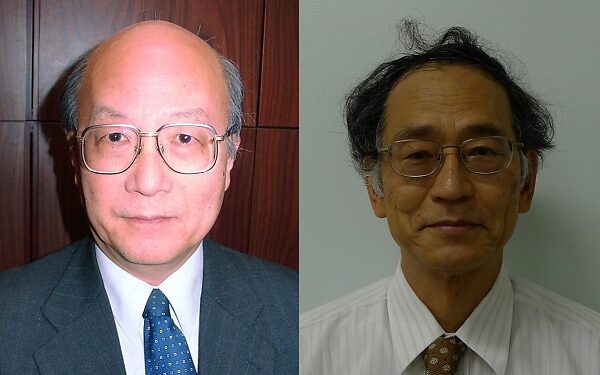"Towards Neutrino Mass Spectroscopy using Atoms/Molecules: Span Project" Motohiko Yoshimura and Noboru Sasao

Date
Tuesday, April 21, 2015 - 14:00 to 16:00
Location
Meeting Room C015, Lab1
Description
Title: "Towards Neutrino Mass Spectroscopy using Atoms/Molecules: Span Project"
Speakers:
Prof. Motohiko Yoshimura
Professor, Faculty of Science, Okayama University
Prof. Noboru Sasao
Professor, Research Core for Extreme Quantum World, Okayama University
Abstract (English)
In the first part of seminar presented by M. Yoshimura our new project of neutrino mass spectroscopy using atoms is reviewed from a theoretical point.
This project aims at systematically and experimentally determining remaining important neutrino parameters: determination of the hierarchical pattern of neutrino masses (normal vs inverted), the absolute neutrino mass value (or the smallest mass assuming three flavors), distinction of Majorana neutrino from Dirac neutrino, and determination of CP violating phases including those intrinsic to the Majorana neutrino. When the smallest neutrino mass (assuming three species of neutrinos) is determined with some precision, we can design experiment detecting the relic neutrino of 1.9 K temperature [1], which is important to the theory of early universe. Emphasis is placed on the principle of experimental method.
In the second part of seminar presented by N. Sasao, the current experimental status is reported. One of the key concepts of the project is “macro-coherent amplification principle” which should amplify otherwise small atomic neutrino rate to observable levels. Recently the principle has been tested experimentally with a two-photon process from a vibrationally excited state of para-hydorgen molecules [2]. The result shows that, owing to generated coherence among the molecules (see Fig.1), the observed rate is 1015 larger than that of the spontaneous rate, and that the essential part of the principle is proven experimentally. The detail of the experiment together with the future prospects will be presented in the seminar.

Figure 1: Raman side bands observed in the experiment. Large coherence was generated among hydrogen molecules.
References
[1] M. Yoshimura, N. Sasao, and M. Tanaka, Phys. Rev.D91, 063516(2015).
[2] “Observation of coherent two-photon emission from the first vibrationally-excited state of hydrogen molecules”, Y. Miyamoto, H. Hara, S. Kuma, T. Masuda, I. Nakano, C. Ohae, N. Sasao, M. Tanaka, S. Uetake, A. Yoshimi, K. Yoshimura, M. Yoshimura, Prog. Theor. Exp. Phys. 2014, 113C01 (arXiv:1406.2198v2)
::::::::::::::::::::::::::::::::::::::::::::::::::::::::::::::::::::::::::::::::::::::::::::::::::::::::::::::::::::::::::::::::::::::
表題:“原子・分子を用いたニュートリノ質量分光に向けて:SPAN計画”
講演者:吉村 太彦(岡山大学、量子宇宙研究センター)
笹尾 登(岡山大学、極限量子研究コア)
概要:
セミナー前半部に於いては、我々の新しいプロジェクトである「原子・分子を用いたニュートリノ質量分光プロジェクト」の理論的諸側面を概観する(講演者:吉村)。本プロジェクトは、ニュートリノの重要な未解決課題を実験により組織的に測定することを目的としている。重要な未解決課題とは、ニュートリノ質量階層(正常または逆階層)の識別、ニュートリノ絶対質量(または最軽量質量)の測定、マヨラナ型またはディラック型の確定、マヨラナ位相を含むCP非保存位相の決定である。もしニュートリノの最小質量をある程度の精度をもって決定することが出来れば、我々の方法は宇宙背景ニュートリノ(1.9K)を観測にも道を拓き、現実的実験の設計を可能にすると期待される。講演では出来る限り実験の原理的側面を強調したい。
セミナー後半部に於いては、「原子・分子を用いたニュートリノ質量分光計画」実験の現状を報告する (講演者:笹尾)。本計画の核心となす原理は「マクロコヒーラント増幅機構」と呼ばれる新たな増幅原理である。この原理を用い、極端にレートの小さい原子からニュートリノ生成過程を増幅する。最近、パラ水素振動励起状態からの二光子過程を用い、この増幅機構の原理検証実験を行った。その結果、分子に付与したコヒーランスにより(下図参照)、二光子過程のレートは、自然放射過程のそれに比較し、15桁以上増幅されることを示した。これにより「マクロコヒーラント増幅機構」の基礎的部分は実証されたと考えられる。セミナーに於いては、本実験の詳細と今後の展望を紹介する。

写真の説明:実験で観測された高次ラマン光。分子のコヒーランスが高い程、より高次の光が生成される。
参考文献:
``Experimental method of detecting relic neutrino by atomic de-excitation'', M. Yoshimura, N. Sasao, and M. Tanaka, Phys. Rev. D91, 063516(2015).
``Observation of coherent two-photon emission from the first vibrationally-excited state of hydrogen molecules'', Y.Miyamoto, H.Hara, S.Kuma, T.Masuda, I.Nakano, C.Ohae, N.Sasao, M.Tanaka, S.Uetake, A.Yoshimi, K.Yoshimura, M.Yoshimura, Prog. Theor. Exp. Phys. 2014, 113C01 (arXiv:1406.2198v2)
Sponsor or Contact:
Hirotaka Sugawara
All-OIST Category:
Subscribe to the OIST Calendar: Right-click to download, then open in your calendar application.



